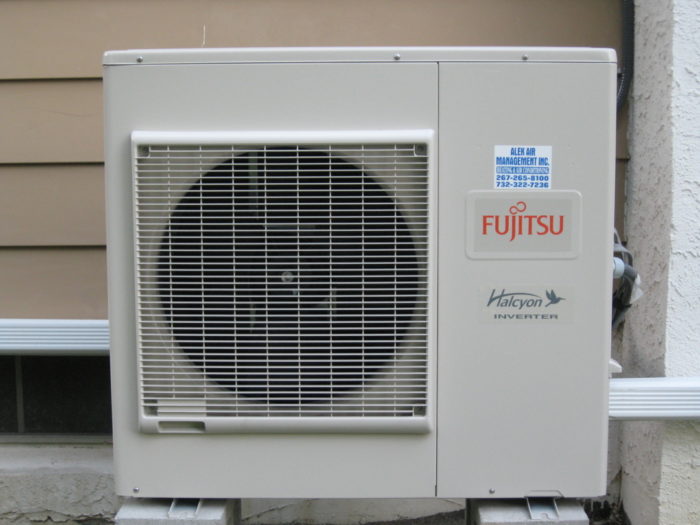
Image Credit: Fujitsu
With the exception of one week in February 2011 where I switched back to the oil boiler to take some data before it went away, the Fujitsu 12RLS has now been heating the house for two years. The dedicated meter for the heat-pump system reads 2,584 kWh. So, it cost about $250 per year to heat our house, in mostly milder-than-normal weather. This is about 1/4 the cost of operating the oil heating system.
Most houses in the Northeast have a boiler and forced hot water heating, and most of the rest have a forced-air furnace; both are central heat systems. Without some energy retrofit work, most houses can’t be converted over to a single-zone minisplit and have adequate heat throughout the house.
In cases where the central heating system is due for replacement, a multizone minisplit may be worth considering. We’ve done just that at South Mountain Company for a client with a 30-year-old boiler and a poorly designed distribution system. That system cost over $20,000 installed, though.
Put a minisplit head in the living room
A single-zone minisplit costs about $4,000 installed. In cases where the entire house doesn’t need to be fully heated, or houses in which a point-source heater can carry the load of the house in mild winter weather, a minisplit can be a great retrofit.
In the Pacific Northwest, a major study has been conducted using a single-zone minisplit as a retrofit to the many electrically homes there. On average they have shown a 40% reduction in heating energy, with some homeowners experiencing much higher savings (the ones most likely that kept the doors to the bedrooms open!)
In the studied homes, the electric-resistance heating units were left in place, to be used as needed. It’s very possible to consider a similar approach in fossil-fuel-heated homes. The best candidates are houses with open plans, so the heat pump can heat a good portion of the kitchen/dining/living space, and houses where the other rooms are located where natural convection (warm air rising) can transport heat to them.
It would be best for the existing heating system to be one that has more than one zone, so that the zone(s) not well heated by the heat pump can still be heated by the existing system.
A return to the days before central heating?
Best suited might be houses where a number of the rooms are not occupied: for example, a large house with a single occupant who needs a bedroom, bath, and the public areas heated, but not the other four bedrooms and two baths. In essence, it’s going back to the days when a central hearth kept the public spaces warm and the peripheral spaces were much cooler.
These changes will likely be driven by fuel prices, so they are more appropriate where there isn’t any natural gas available: houses where oil, propane, and electric resistance are the primary heating fuels. As of the 2009 EIA energy use surveys, there were almost 9 million households in the Northeast (New England and mid-Atlantic states) using those fuels as the main heating source. That’s a significant opportunity.
Variations in energy use
Last year, during November and December 2011, our net energy purchased from the grid was 98 kWh — that is, we imported 98 kWh more than we used. This year, during the same period, that figure was three times higher: 299 kWh net import. Why so different?
For one thing, it was cloudier. The PV system made 68 kWh more last year during this time.
The larger difference is that we used more electricity: 947 kWh this year vs. 814 kWh last year. How come? I can think of three things:
- It was colder this year — 1,580 heating degree days (base 68°F) vs. 1,296 in the same period last year, mostly in a colder-than-average (yes, we still have those occasionally!) November. So the heat pump ran more — 98.5 kWh more, in fact. That’s the big one.
- Jill is working three long days a week instead of going to work five days/week, so she’s home more, using lighting, a higher thermostat setting, the computer. A small impact, but it’s likely real.
- Jill’s Christmas cookie marathon, in which she made 16 different types of cookies. Lotta oven usage, plus kitchen appliances and lighting, plus dishwasher, plus more hot water cleaning up. This extra usage of energy is very well appreciated by many cookie recipients!
You can see that the big difference is weather-related: it was colder and cloudier. The lower energy use a house has, the larger these year-to-year variations will be on a percentage basis. Yet the benefit of solar-driven, energy-efficient building is that the percentage variations may be high, but the absolute difference in dollars is small. So the difference in our net energy flow over those two months year to year is about $37 total.
Marc Rosenbaum is director of engineering at South Mountain Company on the island of Martha’s Vineyard in Massachusetts. He writes a blog called Thriving on Low Carbon.
Weekly Newsletter
Get building science and energy efficiency advice, plus special offers, in your inbox.





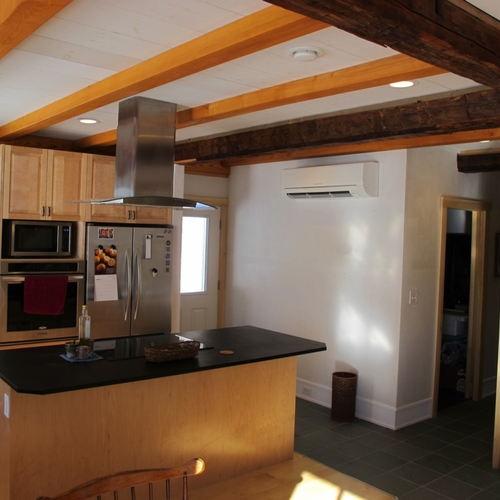
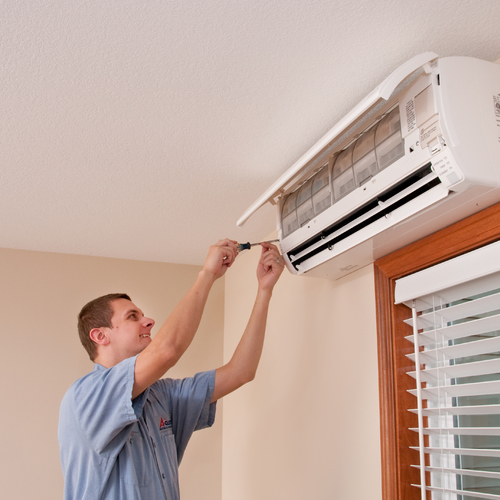
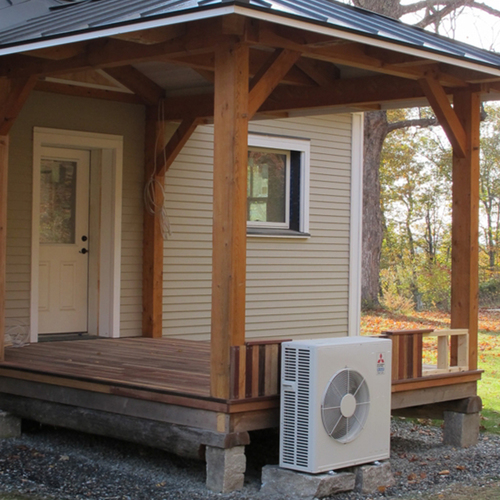
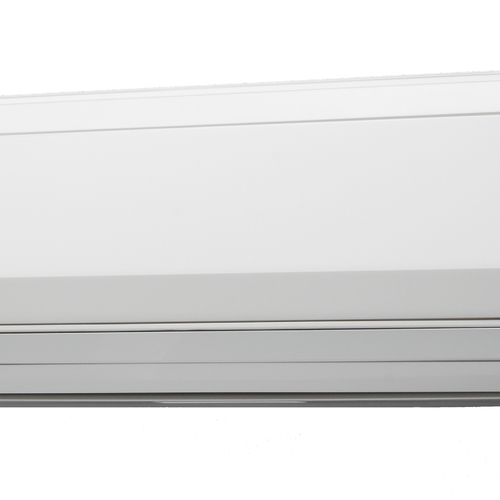






20 Comments
Reuse central air installation
Nice article mr Rosenbaum!
Owner of older central heating system, be it oil or electrical based,
Could reuse the ventilation portion of the already installed systems to provide recirculation for the heat provided by high SEER recent mini splits.
Fans are not the expensive parts, and there are many options for external controllers with speed modifications.
Back to mini splits, i do not wish to push out installators of sais systems, but i ve often seen Mitsubishi mini heat+cool models online for around 1500$ ( 1 ton)
Which comes precharged and is very easy to install on a diy basis ( only for omes with required basic knowledge and access to a small vacuum pump )
Though it voids the warranty, at less than half price, if installing 2 units it becomes an economically viable solution i believe, one i would try without hesitation ( installed price for brand products here in Quebec are almost ridiculous)
Happy to see positive results from recent het pump technologies , for alot of northern climates residents, 25-40% heating cost difference will be huge.
Minisplits are amazing
I did a 4 head Mitsubishi (1@3, 1@1) on, of all things, a double wide rental mobile home for about what a code minimum package unit plus new crawl space ductwork (old ducts were shot). would have cost. We basically doubled the SEER of what the package unit would have delivered and the eventual tenants will have 4 zones...in a mobile home!
Owner will deck over the old floor grills and have an inch of closed cell foam applied underneath, which should greatly reduce infiltration, insect entry, and humidity.
I did it at cost, around $7k, as a training exercise, but I'd happily repeat the job for $9-10k. My crew was in and out in a day or two, and were spared the aggravation of running duct in a crawl space. They much prefer 15 lb air handlers and 50 pound condensers rather than 300+ pound package units.
If memory serves we attached two 6 kbtuh and one 15 kbtuh heads to a single 24 kbtuh outdoor unit, and an additional 9 kbtuh single head system.
I'd say $4k per head is high, but I'm not paying Mahthuh's Vinyuhd logistic and labor costs and whatever ridiculous fees the socialist state and local governments levy up there, so I'll reserve judgment as to fair pricing.
please explain the following
please explain the following for the incult :
"""but I'm not paying Mahthuh's Vinyuhd logistic and labor costs and whatever ridiculous fees the socialist state and local governments levy up there ""
7K$ is pretty cheap i think for what you installed ..even at 8-9K$installed would be a good deal.
The price of the heads is almost the same for all power rating if i recall correctly.
also, a double headed 2 ton units, costed more than 2 single headed 1 ton units last time i checked. I will take 2 sperarete vs 1 anytime :)
+ no need to add in any gaz :)
Minisplit in a 16 by 68 foot Minihome.
Our mini home is a 3 bedroom, 1 1/2 bath unit. Two bedrooms at one end and the Master bedroom at the other end. We had a 1 ton Mitsubishi unit installed in October of 2011. Last winter the unit heated the whole house without the baseboard heaters coming on. The bedrooms are a little cooler than the living area, but we always kept them cooler anyway. Last year the coldest temperature reached was -25.5C (-14F) and this winter the lowest reached was -26C, so far.The unit performed throughout. The unit is not metered, so I don't have power usage on the unit. We installed an HRV at the same time that runs 15 minutes every hour during the day. My wife likes warm FRESH air. We are really impressed with the heat. It is a "softer" heat than baseboards. I would recommend , even without the savings. The savings pay for the unit over ten years. $4,300 installed, less $1,000 in rebates. Power bill is reduced by $360 a year, or about 3,650 Kwhrs.
Roger Williams : could you
Roger Williams : could you tell us what is your total yearly heating electrical cost ?
how many % do you believe you are saving VS electric baseboards ??
thanks for the info
Reply to Jim
My first comment was intended to recognize that costs of doing business are much higher in the northeast, somewhat owing to over-weaning nanny-state government.
As to single vs multi-headed, you are correct, the wholesale cost per head is similar, but that is just one of several considerations:
1) Only a multiheaded unit supports 1/2 ton evaporators...smallest single is 3/4 ton.
2) Having 3 or 4 outdoor units looks pretty cluttered
3) Each unit needs its own pad, dedicated electric circuit, dedicated disconnect
4) Multiple units too close together reduce each other's efficiency - discharge air blows horizontally and having one unit's discharge air reduces capacity and efficiency of unit taking in another's discharge.
Curt:
1- correct that using
Curt:
1- correct that using a 1ton with 2 head on a very energy efficient small house could have benefit of spreading the heat/cool ... still i'd take the 1000-1500$ and invest toward proper ventilation system
2- if you are requiring 3-4 outdoor units = large house = alot of space to install
plus all of this can be planned and special place can be designed to install the units so they do not become a visual hinderance
3- correct, installation + price is obvious the downside
4- why would you need multiple units close together ??
cie: my house is roughly 80ft long total, and i will need to install some AC on both sides
will have to consider using either 2 dual head 2 ton units, or 4 single head 1 ton units
probably be going with the 1 ton single heads because of installation and precharge :) ( diy )
staying within the precharged for 25ft length limits has a large impact on $$ if DIY
Reply to Jin (not Jim...oops)
If you don't mind multiple units at various locations around the house and don't need any one head smaller than 3/4 ton then by all means go with multiple singles.
I sympathize with DIY, but you'll need to evacuate line set before releasing charge. That requires a vacuum pump and micron gauge. You might seek an accommodating HVAC co. to perform that as well as weigh in any required extra charge occasioned by line length after you set all the components.
Curt: no problem with the
Curt: no problem with the name, i get that alot .. JIN is not my real name either ..it is Jean .
( Jin is my "interweb" name :p )
I was not simply reffering to my situation but rather pointing out for everyone that multiple "sets" is another solution to multiple heads ... i understand well it fights different situation :)
On a very long property that would require 2 heads to be installed on each end, using 2 seperate units is probably best choice, and the base price is approx the same, but as you pointed final isntalled price will of course be higher.
Yes of course , DIY AC install is not for everybody but only the more mechanically inclined ...
Though what i wanted to point out is that the price of the units doubles or more when installed,
thus if one chooses a unit from a well known model and manufacturer with minimal defect rates,
even if warranty is voided, they price difference for 2 units or more might be worth the risk.
( i can get 2 mitsu minis for the price of 1 installed .. so even if one would fail within the 5 years of warranty ..as an example only )
Also most mini splits now come precharged for the set line length, so setting up to use the 25ft standard length is economical ( if one can arrange with that length of course ) because there is no need to alter the charge.
Then vacuum might be the culprit for most, but some good used vaccum pumps are easy to get on ebay for 100-200$
( personally i have many since i used to manufacture fiber carbon prepeg parts for motorsports industry ..thus i also have the required knowledge and accessories .. )
I would probably not risk doing it with regular central ac setup, as experiece there is require before everything else , but on mini splits with new quick connect hoses ...i'll try it for sure!
But neway the hole point of this is that we are getting confirmation that the recent units deliver and have a substantial payback .
I've just seen SEER 26 mitsubishi that heat down to -25C !!!!!! now that's something!
Marc- We are with you!
We just moved The Small Planet Workshop http://www.smallplanetworkshop.com into it's new home: A 20 year old 12,000ft2 steel building in Tumwater Washington. Within a few days we found out that the N gas forced air system was providing us almost as much co2 as heat. Not good!
Although this move was quite expensive for us, and we are at the limit of what we can handle for relocation expenses... I was secretly really happy that the system had to be replaced.
The warehouse is a 20 year old steel building and a lesson in "how to design an effective thermal bridge". The Heating system that failed was serving 2000ft2 of offices that are minimally insulated and are a perfect demonstration of an envelop that "breathes". -It's so leaky that it couldn't run out of "breath" at a dead run for 5 miles.
I have to say being in the energy efficiency business and occupying something so contrary to "what we aspire to help create" is frankly disconcerting. So... This coming Monday (1/21), our friend Cory Echert at http://www.southsoundductless.com is installing a two head Mistsubishi system. We are even adding the extra expense of using a ceiling cassette that fits into our drop ceiling.
The office space is divided into 6 rooms and two baths. Since we are only putting in two Mitsi GE12 heads in the two main rooms (one front and one rear), we are going to move the heat around with a Zehnder HRV System http://www.zehnderamerica.com. That's a no brainer for us since we are the regions Zehnder dealer this year.
We've just come off a week's cold snap and PNW temps dropped well below freezing. Having no heat because we had to shut the old system down has proven how bad our envelope really is. We are all really happy that by Tuesday Cory will have us up and warm again with one of the most efficient heat delivery methods available today.
Sadly our utility wil give us a grant for improving our NG system with a better NG system, but they won't help us go from NG to a minsplit since it's a move to electric. It's one of those catch 22's that I find frustrating. The lack of support effectively discourages the movement to the highest COP systems available for small commercial buildings. Drat!
Next comes air-sealing followed by a layer of 100% natural cork rigid insulation!
Btw... Moving a warehouse is a b*tch. I don't advise it.
Albert, you aren't really
Albert, you aren't really hoping an HRV will move heat around, are you? And you're a Zehnder dealer?
I suppose it could move heat around if you don't connect it to the exterior of your building, but you might as well save a few thousand dollars and install a few box fans.
Reply to Jin Kazama
Jin:
It is hard to quantify the heating cost on my mini home. I cannot afford the monitoring. I have two months with no heating or cooling and the base load is 470 Kwhrs on each of those months. That is 5640 Kwhrs a year. Total usage for the last year was 9208 Kwhrs. Cooling load is insignifigant. So I estimate heating at 3569 Kwhrs, or $351.53. This is slightly less than half of what it was. I must point out that we have done a lot of air sealing and we use heat shrink inside storm film.We also replaced an air exchanger with a small HRV.
The heat pump does a great job of heating the house down to about 0F, and has functioned down to -15F. When it is really cold the end rooms stay quite cool. When the grandchildren visited at -15, we had to supplement the heat with baseboards.
connection to existing radiant floor system
Could someone please tell me why a split phase heat pump can't be fed into a heat exchanger connected with an existing radiant floor hot water system? I am looking to retire my oil boiler and have the heat distribution part fully functioning. The radiant system uses low temp water, maximum 120 degrees, so it seems the "head" part of the split phase would be not needed. I could easily make a heat exchanger out of soft copper tubing, the only question would be whether the heat pump could handle the somewhat higher temps of water vs. air.
Response to Bruce Gillett
Bruce,
Lots of people use heat pumps to heat water that circulates through in-floor tubing. You can either use a ground-source heat pump or an air-to-water heat pump (for example, the Daikin Altherma) for this purpose.
Response to Martin Holladay
Seems like once one gets away from the Fujitsu or Mitsubishi mini pumps the prices get stratospheric. So they don't offer a water system option, or am I missing something?
Response to Bruce Gillett
Bruce,
You can buy an air-to-air heat pump (for example, a ductless minsiplit), an air-to-water heat pump (for example, the Daikin Altherma), or a water-to-water heat pump (from a number of ground-source heat pump manufacturers). It's your choice.
For space heating, the air-to-air heat pumps are definitely the most economical way to go.
Response to Martin Holladay
Martin, I hope I'm not being annoying, but I have built heat exchangers before and I want to know if it would be possible to just buy the outdoor unit of a split phase pump and hook it up to my own heat exchanger. Is there more besides a radiator, fan and thermostat in the indoor unit? Thanks.
Response to Bruce Gillett
Bruce,
The indoor unit is just a fan-coil unit, as far as I know, with a blower and a copper coil filled with refrigerant. But I have no idea whether it would be easy or difficult to jury-rig a ductless minisplit to create an air-to-water heat pump.
Ductless vs Baseboards
We are relatively new to the game of ductless heat pumps and are trying to determine efficiencies between Baseboard heating and Daikin Ductless heat pumps. We have been an electrical and HVAC contractor since 1953 and have many case studies with heat pumps vs. oil burners and other HVAC equipment, but I have no data on actual case studies. There are many variables to conceder when providing a customer a Daikin ductless heat pump installation, from sizing the equipment, cost of the equipment, installation, serviceability and warranty. Figuring ROI for your customers and other benefits such as Seattle City Light rebates is a challenge in itself, then trying to quickly calculate the benefits and cost savings of going ductless vs. baseboards has me stumped. Do you know of any links that can be of benefit to us to help make this calculation easier and more efficient?
Thanks, Economy Wiring Company Inc.
Response to Edward Hlavacek
Edward,
I'm not quite sure what information you need. If you are interested in fuel costs, a recent New England study found that natural gas is the cheapest fuel, followed by electricity + ductless minisplits. For more information, see Ductless Minisplits May Not Be As Efficient As We Thought.
I'm not sure what you mean by "baseboards." A hydronic heating system using a natural gas boiler and hydronic baseboard units will cost more to install, but less to operate, than a ductless minisplit system.
Electric-resistance baseboards cost less to install, but more to operate, than ductless minisplits.
A system using an oil-fired boiler and hydronic baseboards will cost more to operate than a system using a natural gas-fired boiler and hydronic baseboards.
A system using a natural gas-fired furnace will cost less to install than a system using a natural gas-fired boiler.
Log in or create an account to post a comment.
Sign up Log in